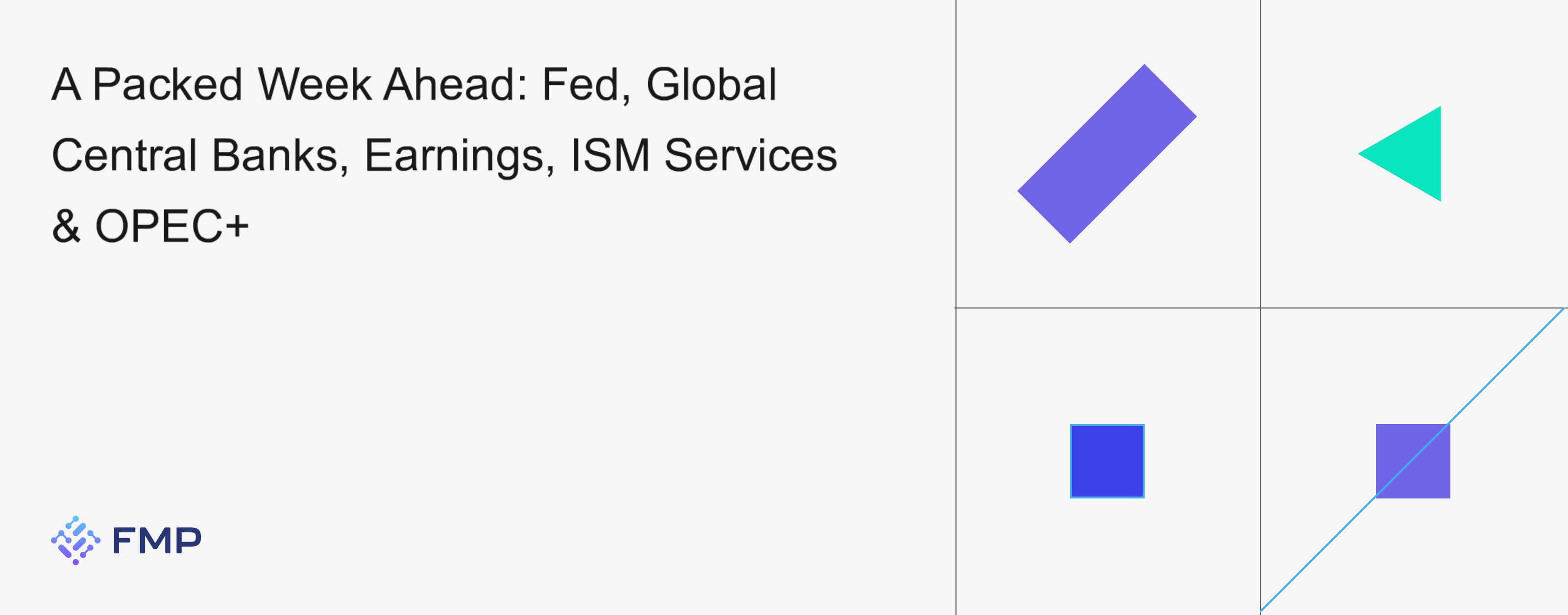
This week’s calendar is crammed with critical monetary policy decisions, corporate earnings, key economic data and OPEC+ output adjustments—all against the backdrop of U.S.–China trade tensions. Here’s what investors need to watch:
1. FOMC & Global Rate-Setters in Focus
The Federal Reserve is widely expected to hold rates steady at its upcoming meeting—even as President Trump publicly pressures Chair Jerome Powell to cut. Trump’s quip that Powell is a “total stiff” contrasts with Powell’s insistence on a “wait-and-see” approach to balance inflation and employment mandates.
Other major central banks will also announce decisions this week:
Bank of England
Norges Bank
Sweden’s Riksbank
Track exact dates and times for these meetings via FMP’s Economics Calendar API, which lists upcoming policy announcements and key macro releases.
2. Q1 Earnings Roll Into Week Two
As first-quarter reporting continues, several market-moving names deliver results:
Ford Motor (NYSE:F)
Advanced Micro Devices (NASDAQ:AMD)
Walt Disney (NYSE:DIS)
ConocoPhillips (NYSE:COP)
Coinbase (NASDAQ:COIN)
With roughly two-thirds of S&P 500 firms already reported, aggregate earnings are about 7% above consensus expectations. Still, tariffs on China, steel and aluminum pose lingering uncertainties for guidance. Monitor upcoming release dates through FMP’s Earnings Calendar API to time your entries around each report.
3. ISM Services PMI: Will It Slip Below 50?
The Institute for Supply Management’s non-manufacturing PMI for April is due mid-week. Economists forecast a slight cooldown—yet still above the 50-point expansion threshold. A surprise dip into contraction territory would amplify recession chatter, especially after Q1 GDP showed a tariff-related contraction.
4. Trade Policy Updates
Trade developments remain front and center:
Trump’s Tariff Moves: Despite pausing some levies, elevated duties on China and other imports persist.
Scott Bessent at Milken: The Treasury Secretary’s comments on U.S.–China talks at the Milken Conference could sway sentiment, especially if he offers clarity on any new outreach to Beijing.
5. OPEC+ Output Hike
Over the weekend, OPEC+ agreed to boost supply by 411,000 bpd in June—far exceeding initial guidance. This move deepens fears of a global oil surplus, dragging prices toward multi-year lows. While oil liquidity and trade tensions intersect, watch for further tariff-driven frictions to influence both crude benchmarks and energy sector earnings.
Key Takeaways:
Keep Fed and global central bank dates bookmarked via the Economics Calendar API.
Schedule your watchlist around major Q1 earnings with the Earnings Calendar API.
Monitor ISM services data for signs of economic cooling.
Follow OPEC+ developments separately to gauge crude price trajectories and energy sector impacts.
By combining these event-driven insights with real-time FMP data feeds, you can stay ahead of the week’s most market-moving catalysts.
